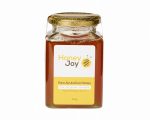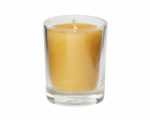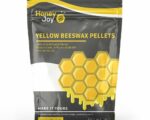We’ve all been there. Staring at the glass jar of honey (now filled with crystallized honey) and trying to figure out how to return it to its original form (i.e. liquid state).
Well, if you’ve been wondering about this exact question (how to decrystallize honey?), wonder no more (I’ve got you fam!). In this article, we are going to talk to you about some of the best (and easiest) ways of decrystallizing honey.
So, sit back, relax, and let me tell you all about how to decrystallize honey!
Key Takeaways
- Crystallized honey is safe to eat, but only if we are talking about natural honey.
- Glucose and fructose are the main reason why honey crystallizes.
- Raw honey has more antioxidants (and general health benefits) when compared to other types of honey.
Decrystallizing Honey
Before I start telling you about different ways you can rid yourself of crystallized honey, let me first tell you that the method you use will be dependent on the type of container your honey is stored in.
So, for example, a method that will work for a glass jar of honey, might not be ideal for a plastic bottle (the answer to that will be explained later in great detail).
Before you start doing anything, make sure your container of honey is appropriate for a particular method!
I don’t want you putting plastic bottles of honey in your microwave (like really, don’t do that!)!
How To Decrystallize Your Jar Of Honey?
So, here we are, finally.
There are a couple of methods, and you should use the one that best suits your needs. The important thing is that all of them will give you the same result – decrystallized honey!
1. Water Bath
This method is as simple as the name “water bath” suggests (and yes it does involve hot water). There are a couple of steps that you should follow to get your honey back to its original liquid state (No more crystals for you!).
All you really need is a way to boil water (tea kettle, stove, anything you have on hand) and a big enough container that you can put your jar of honey in.
After boiling some water, pour that water inside this container. The next thing you should do is just put the jar of honey inside the container (now filled with warm water).
Ok, now what? You just have to wait for the honey to decrystallize. Depending on the amount of honey, the processes can last a while.
With this method, there is a chance that the warm water will cool off before the honey is completely decrystallized. If that’s the case, don’t worry!
All you have to do is put on another pot of water, heat it up, and pour it into the container with the jar of honey.
Essentially, you have to make sure that the “water bath” you are giving to your jar of honey, is warm enough.
If you manage to keep the temperature up, you will have your liquid honey back in no time!
If you remove the lid and stir the honey (inside the jar) you might reduce the time it takes for the crystals to separate.
2. Heating Honey In A Microwave
Should you do this? I mean, it’s up to you. If you are sure your container is microwave-safe then most definitely, as this will require far less time to decrystallize honey, than the “water bath” method (it is a microwave after all).
I can’t stress this enough – before heating honey in the microwave make sure your container of honey is microwave-safe!
This method will decrystallize honey much faster. However, if you overdo it, you might burn it and in doing so, essentially destroy all the healthy minerals and beneficial enzymes. So, be extremely careful when choosing this method!
Plastic Bottle Of Honey
If you have a plastic bottle of crystallized honey and you want to decrystallize it, you have to be extra careful. Why? Because the two above mentioned ways of decrystallizing honey both involve heat.
And heat (as we all should know) can melt your plastic honey container. So, what does that mean? Well, essentially you would be eating plastic alongside your favourite brand of honey.
So, when dealing with a plastic bottle of honey you should be mindful of a few things. If you choose the “water bath” to turn your solid, crystallized honey liquid again, make sure not to overdo it with the heat (you don’t want the plastic to start melting).
If water is too hot, the plastic will start to melt, so make sure the water is not boiling!
Now, as far as heating your plastic container of honey in a microwave, I wouldn’t advise it (unless you know for sure, the bottle is microwave-safe).
FAQ
Should You Decrystallize Raw Honey?
The closest thing you can get to honey that is straight out of the beehive (that means no added sugar!) is raw honey. Raw honey is a special type of honey that comes with more benefits than other types of honey.
Because raw honey does not go through the process of pasteurization it has much more beneficial enzymes, than other types of honey [1].
Pasteurization is the process of heating things up and to decrystallize honey you also need to heat things up. Be careful though because there are some drawbacks.
Heat can essentially destroy the beneficial enzymes and minerals. And why is that important?
It’s important because those enzymes and minerals are precisely the reason why raw honey is considered to be the healthiest type of honey.
So, if you choose to put your jar of raw honey into hot water, make sure that the water is not too hot (don’t put it in boiling water!).
Is Crystallized Honey Safe To Eat?
The answer to this question is 100% yes! The only reason why you shouldn’t eat crystallized honey is if you don’t like eating it, that’s all.
Believe it or not, there are some people who actually prefer eating crystallized honey. Why? Well, it’s easier to spread on toast and it’s kind of crunchy.
How To Prevent Honey Crystallization?
Technically you can’t. Honey is always in a process of crystallization because the molecules of fructose and glucose (which make up a big chunk of honey, around 80%) tend to crystallize at all times.
So, now you know that honey will always crystallize, and there is nothing you can do about it or is it (actually there is)?
You can’t stop the crystals from forming, but what you can do is slow the whole process down by doing just a couple of things.
Honey tends to crystallize faster at temperatures below 10 degrees celsius. The best way to combat this is to keep your honey at temperatures above that (the ideal would be room temperature).
If you want to properly store your honey, make sure it’s always in a place that does not go below 10 degrees celsius!
How To Properly Store Your Honey Jar?
There are a few steps that you should follow if you want your honey to be stored properly.
If you properly store honey, you will postpone (or slow down) the formation of crystals (that glucose and fructose are responsible for).
The first step is to make sure your lid is tightly sealed (this is common knowledge, but still).
To ensure your honey is properly stored, make sure you do not expose it to direct sunlight.
The temperature of the room you store your honey should not be below 10 degrees celsius. Crystallization tends to accelerate at temperatures below that.
The place you store honey should be cool, but not “refrigerator cool”.
Another important thing, when it comes to storing honey is to keep it away from any moisture. Glass jar is probably the best container that you can use for your honey.
Storing honey in metal containers may lead to oxidation, so it’s advisable not to do that [2]!
Honey in plastic bottles is still great, but I personally prefer a glass jar. Ultimately it’s up to you, where you want to store your honey (just don’t use metal containers!).
Why Does Honey Crystallize?
The reason why honey crystallizes lies in the fact that honey is essentially concentrated sugar.
Honey will always crystallize because it’s a solution made up out of around 80% sugar and 20% water.
Over a period of time, this “sugar” (in honey) will start to “leave the water behind”, which leads to the formation of crystals.
When honey crystallizes, it gets a more “solid” form, but it’s still completely safe to consume.
The Bottom Line
We’ve talked a little bit about how to decrystallize honey.
I hope you’ve enjoyed the article, and that you will use the tips mentioned above to decrystallize honey in your own home.
As a reminder, one of the best methods to decrystallize honey is to put your glass jar (or plastic) in a pot filled with hot water (but not boiling water!).
Sources
- https://www.britannica.com/technology/pasteurization
- https://www.thoughtco.com/definition-of-oxidation-in-chemistry-605456






